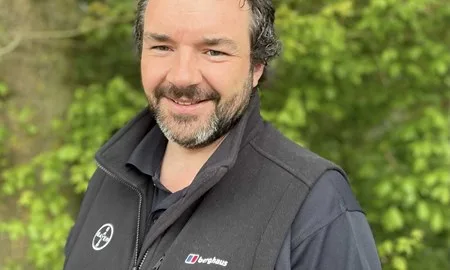Published on 29th September 2022
Local Insights
Three weed and disease issues to tackle in Scotland

Grant Reid highlights three weed and disease issues for Scottish growers to consider this October
Three weed and disease issues to tackle in Scotland Content
Crop Progress
There are some stonking crops of oilseed rape romping away in Scotland, helped by the bits of rain over the past couple of months and the warm soils. Even the later sown crops are looking reasonable.
Some growers have sprayed for cabbage stem flea beetle so we’re not without some problems, even into Aberdeenshire, but I’ve not heard of any lost crops. It is an issue Scottish growers are going to have keep an eye on in the future. Slugs haven’t been much of a problem this season, apart from the odd spot.
There has been a huge flush of volunteer barley in oilseed rape crops this season, so first graminicides are being used.

Cereal crops were being drilled in good seedbed conditions in September. Some growers will be drilled up in September, while others were only just beginning. Crops have been emerging quickly. I’m hopeful the roots on these crops will grow down the soil profile in search for water and give decent anchorage.

Grant’s agronomy tips for October
1. Consider stale seedbeds especially before spring crops
There’s still scope for a stale seedbed, especially for ground that’s not going to be cropped until spring. Tickle or cultivate the surface and let it green up, and then it can be destroyed before it is cultivated or ploughed for the winter. Removing any grassweeds or volunteers now will reduce the burden in the spring crop.
An alternative this season with the warm, relatively dry soils, could be to put in a green manure crop. Usually October would be too late to consider this, but with the good conditions there might still be time if you can get one in before mid-October. This is worth considering especially if the field is on a slope to help bind it together and reduce erosion. Something like a Westerwolds grass, which establishes quickly could be an option if you have livestock as if it grows well enough it could provide some grazing before spraying off in late winter.
For those with stubbles that have greened up before winter cereals, look carefully at the weeds before deciding on what to do. If it is just annual broadleaf weeds, cultivation could be enough pre-drilling, but if you have difficult grassweeds or perennials, such as spear thistle or couch, don’t skimp on the appropriate dose of Roundup (glyphosate).
While you can mix in glyphosate with the pre-emergence application, I would suggest doing it as a separate application. That way you can pay attention to the sprayer’s forward speed, boom height and nozzle choice and you know it is done before the ground is cultivated or moved when drilling.
2. Apply residual herbicides in wheat and barley
Where grassweed pressure demands the more active residual herbicides, Liberator (flufenacet + diflufenican) + Proclus (aclonifen) is an option. That’s most likely in south Scotland.
The mix can be used in both wheat and barley – although the rate of Proclus in winter barley is lower at 1.0 L/ha compared with 1.4 L/ha in winter wheat. But if you have significant brome problems you should be questioning whether to grow winter barley at all.
In mid-Scotland and north annual meadowgrass and broadleaf weeds tend to be the main threat. Here Liberator plus a mixer to broaden weed spectrum will do a good job. The metribuzin-based products Alternator Met and Octavian Met (flufenacet + diflufenican + metribuzin) are also good options here at a dose of 0.5 L/ha. Both can be used pre- and early post-emergence in wheat and barley.
3. Monitor for oilseed rape disease
Light leaf spot is usually the main oilseed rape to be concerned with, but SpotCheck samples from Scotland have found Phoma and downy mildew in the past, albeit not to a huge extent.
Light leaf spot can be a problem surprisingly early – SpotCheck found that despite no visual signs when sampled, 40% of last October’s samples were carrying light leaf spot. Of course, that’s a biased sample to some extent but it shows the risk is there.
If you want to take advantage of our free SpotCheck service this autumn, get in touch for a sample pack.
The high commodity price for oilseed rape continues to provide incentive for investing in the crop with the price of an autumn fungicide relatively negligible, while helping to protect plants.
Adding a fungicide, such as Aviator (bixafen + prothioconazole) or Proline from mid-October, especially if you’re going through with a winter stem weevil spray or trace element feed probably makes sense.
Weed Screen Tour
Ella and James give a tour of Bayer's latest grass-weed matrix trial.



